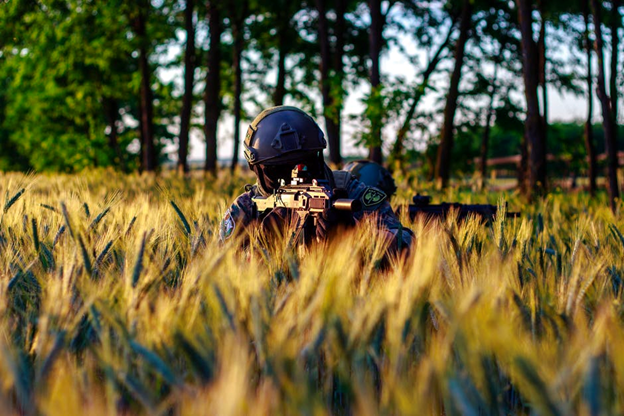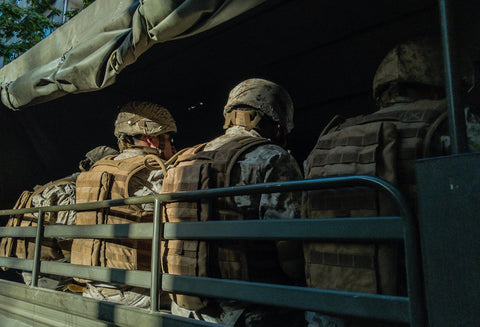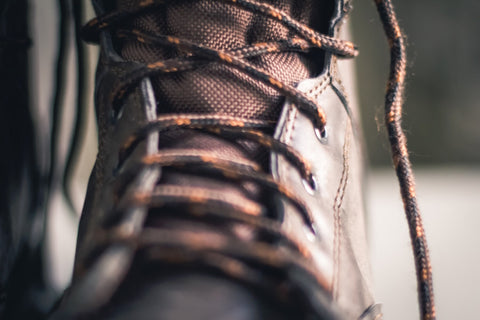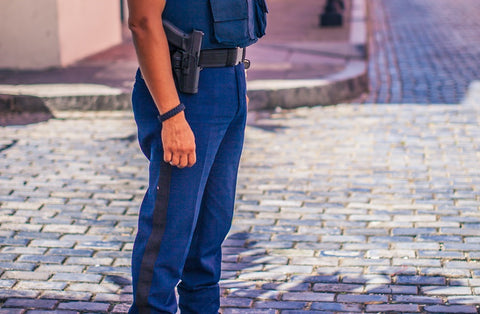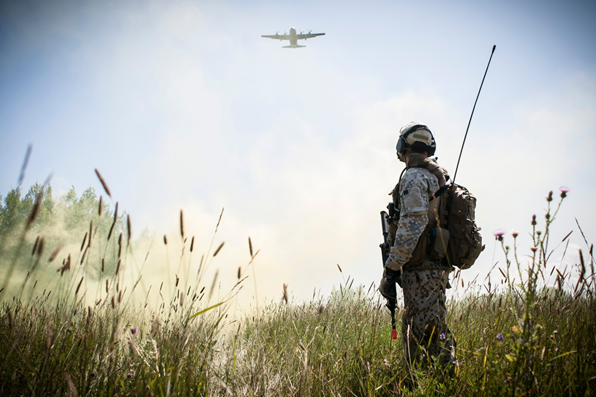Firearm Accessories That Every Police Officer Should Carry

Every Law Enforcement Official Should Have These Firearm Accessories
As a law enforcement official, having a firearm is a crucial part of your job. You want to avoid using it until it is absolutely necessary, and when that happens, you’re likely in a life-or-death scenario. As an officer, you’re only as strong as your weakest piece of gear. To remain safe and secure on the job, your firearm should be well-stocked with effective accessories, and complementary tools that provide assistance when necessary.
Your organization or agency may provide you with some of the tools you need to thrive as an officer. Even if that is the case, you should still look for ways to improve your ability to succeed, and firearm accessories.
Keep reading to learn which firearm accessories are essential for law enforcement, and what to look for when acquiring these tools.
Top Firearm Accessories For Law Enforcement
The Proper Holster
A holster is more than just a strap – it’s a vital piece of equipment that can protect your safety and the safety of those around you. It’s important to choose a holster that keeps your firearm and its trigger concealed properly. Holsters come in many varieties that can fit on various areas of the body, and have specific traits. Never settle for a holster that compromises your safety, functionality, or comfort.
Extra Ammunition
Replacing your ammunition when necessary is a good habit to develop. After all, your firearm serves no purpose if it isn’t stocked appropriately. Since ammunition is more likely to fail if it is older, make sure you change your ammo frequently.
Gun-Cleaning Kit
A firearm must be kept clean for it to work effectively. A good cleaning kit should include a gun solvent, cleaning rods, rod accessories, cleaning patches, and gun oil.
READ MORE: How to Clean and Maintain Your Tactical Gear
Red Dot Optics
Red dot sight is an incredibly useful feature for long-range weaponry. This accessory uses a red dot as a reticle, lining up the perfect shot for increased accuracy. It uses a spherical partial mirror covered in a coating that only reflects red light, creating the red dot effect. For missions requiring precise shots, this is a must-have item.
Night Sights
It’s no secret that aiming a firearm correctly is more difficult in the dark. Instead of relying on hope, you should use a night sight for assistance. By using glowing lights to help you see what you are aiming at, this accessory is extremely helpful for night missions.
Backup Firearm
It isn’t just helpful to have a backup firearm – it could save your life. Your primary firearm could fail you in many ways, from running out of ammo to being out of reach, or even being dropped or taken from you. If you use a secondary firearm, remember to take care of it as if it were your primary firearm. That means keeping it clean and well-stocked.
Other Tools To Have At All Times
Tactical Flashlight
Not all flashlights are equally effective. When choosing a tactical flashlight, look for key features that will give you the most bang for your buck. Your tactical flashlight should obviously be bright, but more specifically, its first setting should be bright, since it’s the setting you’ll get in scenarios requiring quick action. It should also be easy and comfortable to use, and resistant to dropping or water damage.
Body Armour
Since working in law enforcement is unpredictable, any official should be wearing body armour at all times. Check with your agency or organization to see what requirements or recommendations are in place for body armour. It’s crucial to ensure that your set of gear is complete, clean and absent of any wear or tear.
Radio
You never know when you’ll need to quickly communicate with a colleague, or when they’ll need to communicate with you. As a result, your radio should be on your person with a full battery charge at all times.
Medical Kit
A carefully stocked medical kit is a critical component of your gear set. Everyone has a different idea of what pieces are essential and which are not, so think critically about what you need. Ideally, your medical kit should have the necessary tools to stabilize critical injuries. This should likely include personal protective equipment, patient assessment tools, trauma supplies, airway support tools, and medicines.
Batons
Your agency or organization may or may not permit the use of batons. If they do, you may choose to use this tool as a defensive weapon.
READ MORE: Comparing Different Expandable Batons
Other Restraints
Your agency or organization may permit the use of certain restraints. Pepper Spray and mace are common examples, but you should check in with your organization for specifics on what is allowed.
You should regularly check all of your equipment to ensure that it is functional and clean. After all, your equipment does not simply follow along on your job, but it directly correlates to your ability to succeed.



